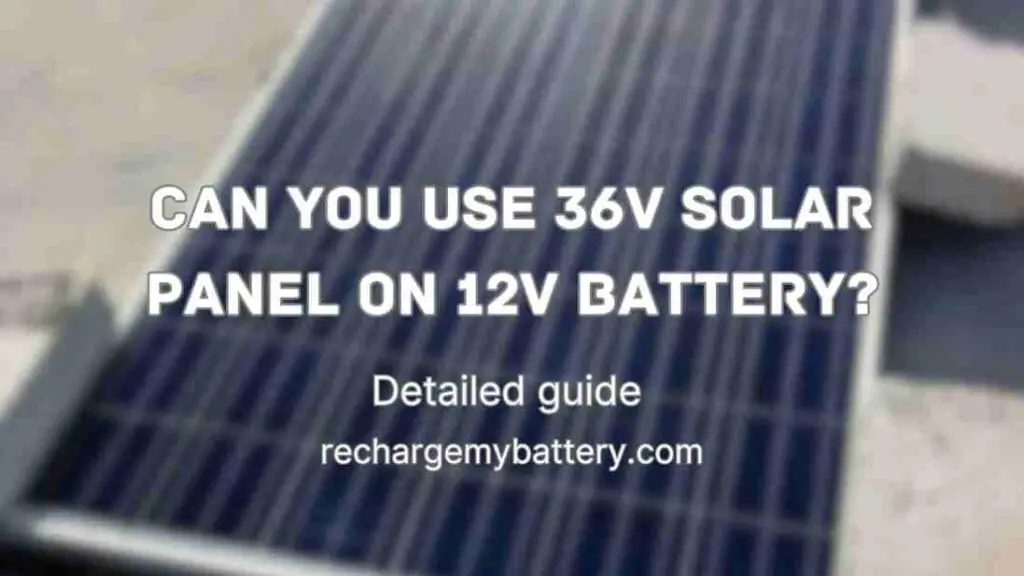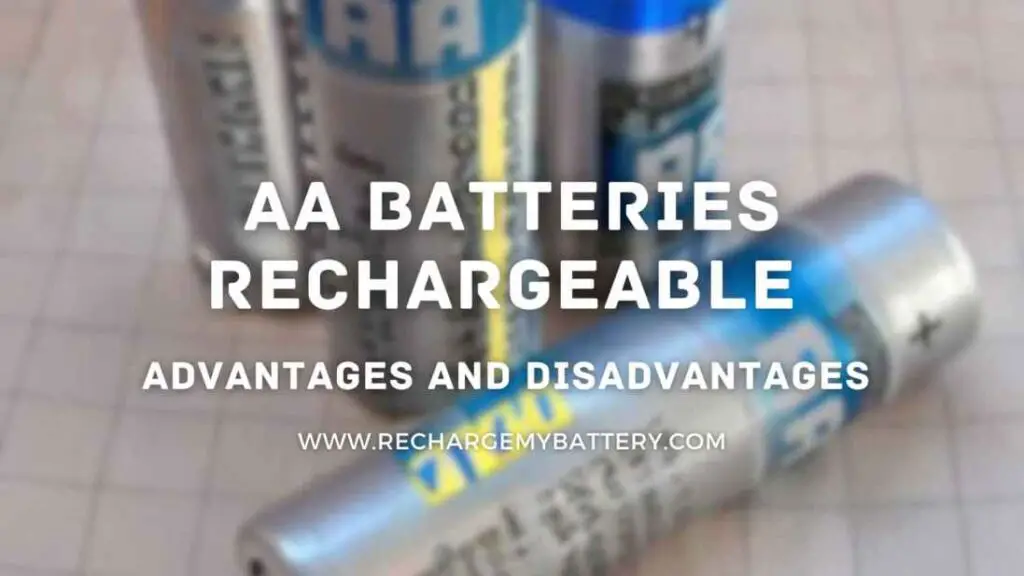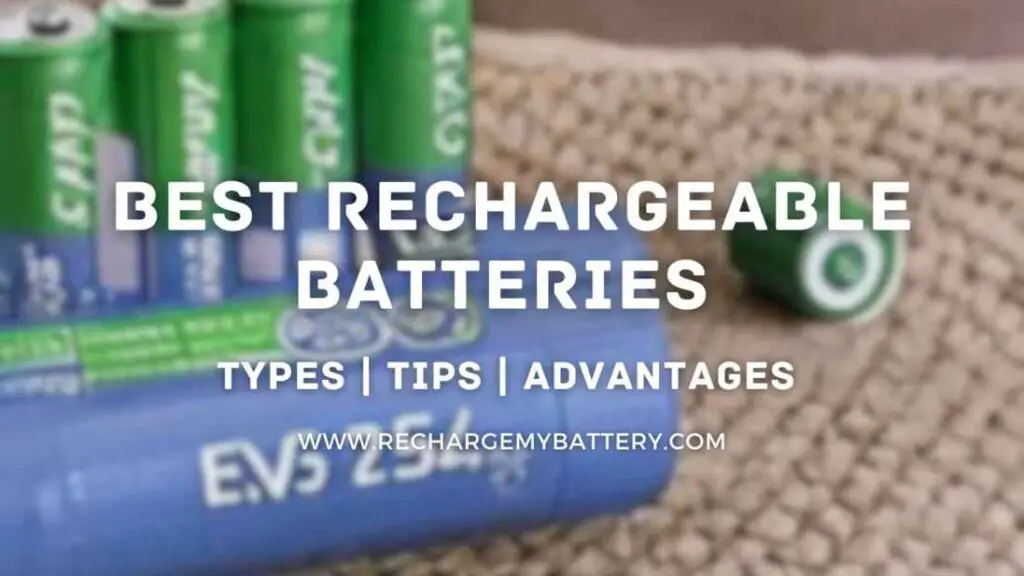In this article, we will dive into the question of whether it is possible to use a 36-volt solar panel with a 12-volt battery and examine the potential implications that arise from such a configuration.
Introduction
Harnessing solar energy involves converting sunlight into usable electricity using solar panels. These panels generate direct current (DC) electricity, which can be stored in batteries for later use.
However, compatibility challenges can arise due to differences in voltage between solar panels and battery systems.
Understanding Voltage and Battery Systems
Voltage serves as an essential electrical parameter, quantifying the variance in electric potential between two points within a circuit. This measurement denotes the vigor or impetus propelling the movement of electric current.
When it comes to solar panels, they are meticulously engineered to generate predetermined voltages, often set at 12 volts, 24 volts, or 36 volts. Conversely, batteries possess distinct voltage ratings, commonly observed in systems operating at 12 volts, 24 volts, or 48 volts.
Compatibility of Solar Panels and Batteries
1. Voltage Match
For optimal charging and efficiency, it is highly advisable to align the voltage of the solar panel with that of the battery system. This synchronization ensures seamless connection without necessitating extra equipment or modifications.
2. Implications of Mismatched Voltage
When a 36-volt solar panel is paired with a 12-volt battery without voltage regulation, several complications may arise.
- Firstly, the battery might not charge adequately due to the lower voltage input.
- Secondly, the higher voltage output from the solar panel can result in overcharging, potentially jeopardizing the battery’s health and lifespan.
Consequently, it is vital to implement appropriate measures when dealing with different voltage systems.
Using a 36-Volt Solar Panel on a 12-Volt Battery
Although directly connecting a 36-volt solar panel to a 12-volt battery is not recommended, there are solutions available to ensure compatibility. Here’s a step-by-step guide:
Step 1: Check Battery Specifications
Prior to proceeding, it is essential to confirm that the 12-volt battery is capable of accommodating higher voltage inputs without incurring any damage.
It is important to note that different batteries possess varying tolerances for overcharging. To ensure compatibility, carefully examine the battery’s datasheet or consult the manufacturer for detailed information regarding its voltage tolerance and recommended usage guidelines.
This preliminary step will help ascertain whether the battery can safely handle the increased voltage from the 36-volt solar panel.
Step 2: Use a Voltage Regulator
To ensure a controlled and safe charging process, it is recommended to employ a voltage regulator or a charge controller. A voltage regulator serves the purpose of adjusting the incoming voltage to align with the specific requirements of the battery.
By installing the regulator between the solar panel and the battery, you can effectively regulate the voltage output, preventing any potential overcharging scenarios.
This intermediary device acts as a safeguard, maintaining a suitable charging level that is compatible with the 12-volt battery while utilizing the 36-volt solar panel.
Step 3: Consider a Charge Controller
n addition to voltage regulation, considering a charge controller can provide additional advantages. A charge controller offers monitoring capabilities for the battery’s charging status, ensuring optimal performance and longevity. It effectively prevents overcharging, which can be detrimental to the battery, as well as over-discharging, which can lead to battery damage.
There are different types of charge controllers available, including:
- PWM (Pulse-Width Modulation)
- MPPT (Maximum Power Point Tracking)
Each of them has its own unique benefits. PWM charge controllers are cost-effective and suitable for smaller systems, while MPPT charge controllers are more efficient and effective for larger systems, especially in scenarios where there is a significant difference in voltage between the solar panel and the battery.
Take into consideration your specific requirements and system setup to select the most appropriate charge controller, ensuring optimal performance, protection, and efficiency for your solar panel and 12-volt battery integration.
Benefits and Drawbacks of Using a Higher Voltage Solar Panel
Using a higher-voltage solar panel in conjunction with a lower-voltage battery presents both benefits and drawbacks. Let’s delve into each aspect:
1. Increased Efficiency
One notable advantage of employing a higher-voltage solar panel is the potential for increased efficiency. Higher voltage systems typically exhibit reduced energy losses during transmission, leading to improved overall efficiency. This translates to the ability to harness more power from the same amount of sunlight, maximizing energy production.
2. Higher Power Output
One of the benefits of utilizing a higher-voltage solar panel is the potential for increased power output compared to a lower-voltage panel. This becomes advantageous in situations where there are high energy demands or limited space for additional panels.
The higher power output allows for faster charging of a 12-volt battery and enables the operation of larger appliances or systems.
3. Complex Wiring and Setup
Integrating a higher voltage solar panel introduces complexities to the wiring and overall system setup. It necessitates meticulous attention to detail in establishing proper connections and utilizing suitable wire gauges to handle the higher voltage and current levels.
Additionally, adhering to safety guidelines is crucial to prevent potential electrical hazards. This aspect requires a solid understanding of electrical systems and may pose challenges for individuals who are new to such installations.
4. Cost Considerations
While employing a higher voltage solar panel offers advantages, it is important to consider the associated costs. The inclusion of voltage regulators, charge controllers, and specialized wiring to accommodate the higher voltage can contribute to an increased overall system cost.
It is essential to factor in these expenses when evaluating the feasibility of utilizing a higher-voltage panel with a lower-voltage battery.
Take into account both the benefits and drawbacks, including the higher power output, complexities in wiring and setup, and cost considerations, when making a decision regarding the integration of a higher voltage solar panel in your system.
Conduct thorough research, seek professional advice if needed, and weigh the advantages against the potential challenges to determine the most suitable approach for your specific requirements.
Alternative Solutions
If you prefer a simpler setup or wish to avoid the complexities associated with voltage mismatch, there are alternative solutions available to consider:
Matching Panel and Battery Voltages
Opting for a solar panel with a voltage rating that matches your battery system simplifies the setup significantly. This approach eliminates the need for voltage regulators or additional equipment, allowing for a direct and straightforward connection.
However, it is important to note that this approach may limit your choices when selecting solar panels, as not all voltage configurations may be readily available.
Parallel and Series Connections
Another viable approach is to connect multiple solar panels together in either a parallel or series configuration to achieve the desired voltage output. In a parallel connection, all the positive terminals of the panels are connected together, as are the negative terminals.
This configuration maintains the same voltage output while increasing the overall current capacity. On the other hand, a series connection involves connecting the positive terminal of one panel to the negative terminal of the next panel, and so forth. This arrangement increases the total voltage output while keeping the current capacity the same.
By exploring these alternative solutions, you can find a setup that suits your preferences and simplifies the integration of solar panels and battery systems, providing more flexibility and convenience in your renewable energy setup.
Safety Precautions
When working with solar panels and batteries, prioritizing safety is of utmost importance. Here are some essential precautions to observe:
1. Overcharging
To prevent overcharging, ensure that the voltage regulator or charge controller being used has appropriate settings and capabilities. These devices help regulate the charging process, ensuring that the battery is charged within safe limits and protecting it from potential damage.
Follow the manufacturer’s instructions and guidelines for proper configuration and operation.
2. Overheating
Higher voltage systems can generate increased heat during operation. It is vital to monitor the temperature of the components, especially the solar panels and battery, to avoid overheating issues.
Adequate ventilation and cooling measures, such as proper spacing and airflow, should be implemented to dissipate heat effectively and maintain system efficiency.
3. Risk of Electrical Damage
When connecting different voltage systems, there is a risk of electrical damage if not done correctly. It is crucial to adhere to the manufacturer’s recommendations and guidelines for proper wiring techniques and connections.
Use appropriate wire gauges capable of handling the voltage and current levels involved. If you are uncertain about the electrical aspects, consulting professionals or qualified electricians can help ensure a safe and reliable setup.
4. General Electrical Safety
Remember to follow general electrical safety practices, such as turning off power sources before making any connections or adjustments, wearing appropriate personal protective equipment (PPE), and exercising caution when handling live electrical components. Insulate exposed wires, protect them from physical damage, and avoid working on the system during adverse weather conditions.
By implementing these safety precautions and guidelines, you can minimize the risk of accidents, and equipment damage, and ensure the safe and effective operation of your solar panel and battery system.
Conclusion
In conclusion, directly connecting a 36V solar panel to a 12V battery is not recommended. However, with the use of a voltage regulator or charge controller, it is possible to regulate the voltage and safely charge the battery.
Consider the benefits, drawbacks, and safety precautions involved before making a decision. It is important to ensure compatibility and follow proper guidelines for a reliable and efficient solar panel and battery system.
Thank you for reading this article.
FAQs
Q1. Can I use a 36-volt solar panel on a 6-volt battery?
Q2. What happens if I connect a higher voltage solar panel to a lower voltage battery without a regulator?
Q3. Can I use a 12-volt solar panel on a 36-volt battery?
Using a lower voltage solar panel with a higher voltage battery may result in undercharging and inadequate power supply to the battery system. It is essential to ensure that the voltage specifications of the solar panel and battery are compatible to achieve optimal performance and prevent potential damage.
Q4. What are the benefits of using a matching voltage solar panel and battery?
Additionally, compatibility is ensured, promoting seamless integration and effective power utilization. The risk of undercharging or overcharging, which can harm battery performance, is eliminated.


